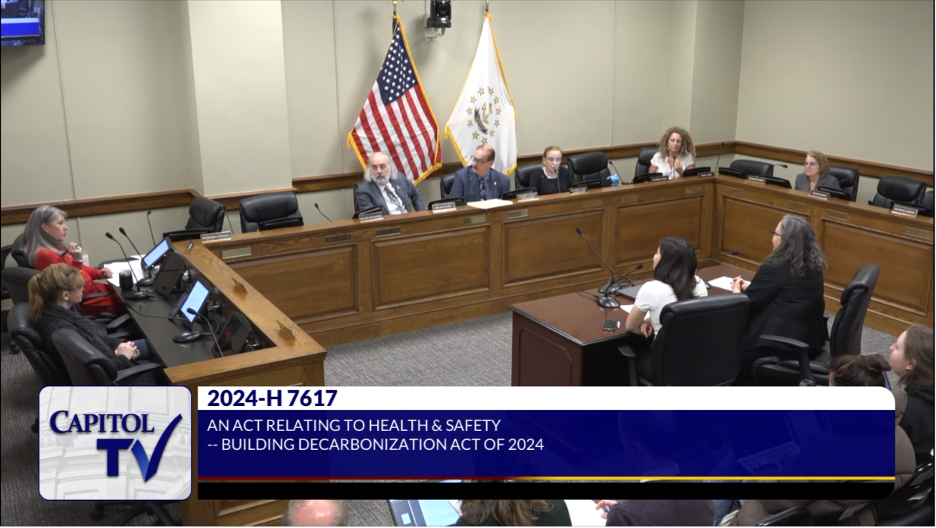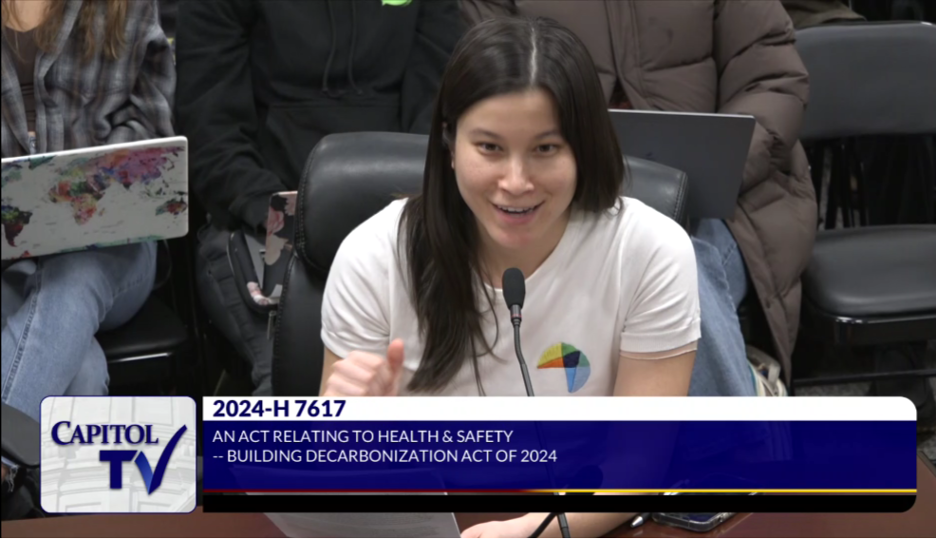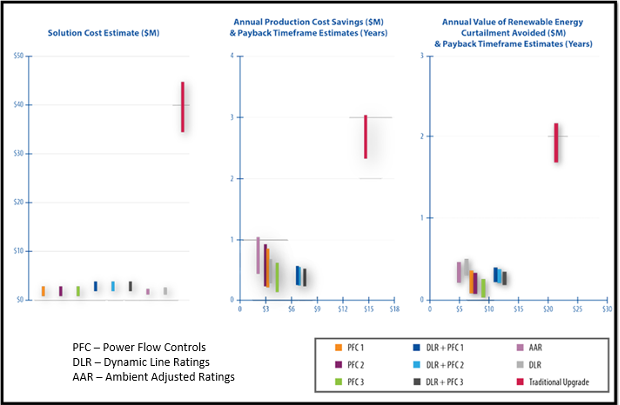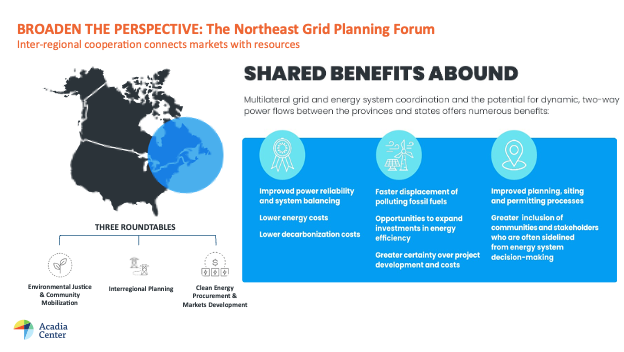Massachusetts DPU Approves Everett LNG Contracts
The Massachusetts Department of Public Utilities has approved agreements between Constellation Energy and the state’s investor-owned gas utilities to keep the Everett LNG import facility operating through May 2030.
The Everett Marine Terminal (EMT) is the only facility in the state that can import and directly inject LNG into the gas network, but it has faced an uncertain future, with Constellation’s cost-of-service agreement with ISO-NE expiring at the end of this month. Constellation owns both Everett and the Mystic Generating Station, Everett’s anchor customer, which is set to retire at the same time.
Joe LaRusso, senior advocate at the Acadia Center, said the DPU’s approval of the contracts is “potentially in conflict with Order 20-80,” particularly if the contract timelines are intended to align with Enbridge’s pipeline expansion effort.
He said the reporting requirements should give the DPU ample information on the utilities’ gas demand trajectories, with the “open question” being whether the DPU allows the companies to reduce their reliance on Everett by securing additional pipeline capacity.
To read the full article from RTO Insider, click here.
No new gas hookups on Aquidneck Island? Idea floated to curb need for Portsmouth LNG plant.
PORTSMOUTH – State energy regulators are in an unusual position as they consider whether to extend the life of what was supposed to be a temporary liquefied natural gas facility in Portsmouth that has attracted the ire of neighbors.
While the Energy Facility Siting Board heard evidence that there’s a need, at least for now, for the use of LNG to back up Rhode Island Energy’s natural gas system on Aquidneck Island, stakeholders in the approval proceedings also said they want to company to do everything it can to quickly make the plant obsolete.
A moratorium would also undoubtedly force change. The idea was first put forward in 2021 by the Conservation Law Foundation and the Acadia Center, environmental groups that argued a ban was justified after the passage of the Act on Climate, the state law that requires Rhode Island to reach net-zero emissions by 2050.
To read the full article from the Providence Journal, click here.
EVs, heat pumps seen creating Northeast grid crunch
Electrifying New England’s transportation and heating sectors will lead to a potential 17 percent increase in power demand by 2033, the region’s grid operator said.
The upward trend is putting pressure on developers and regulators to accelerate new generation and transmission projects.
“Our current policies regarding energy efficiency and distributed generation — particularly solar — are already putting us on a different path for the future,” said Kyle Murray, Massachusetts program director at the environmental nonprofit Acadia Center, in a statement.
To read the full article from E&E News, click here.
Opinion: No, heat pumps won’t break CT’s grid
A recent CT Mirror op-ed presents a misleading picture of the impact that electric heat pumps will have on Connecticut’s electricity system.
Moving customers off fossil gas by electrifying homes and businesses with appliances such as heat pumps will be a key component of achieving Connecticut’s climate and clean energy requirements. While major investments in the grid will be necessary over the coming decades, we must move quickly to upgrade the grid while simultaneously installing heat pumps, moving to electric vehicles, and deploying other advanced clean energy technologies.
The claim that “[too] many heat pumps would bring grid failure” to Connecticut is a misleading message at a time when there is an urgent need to rapidly electrify our buildings. The grid must undoubtedly expand to facilitate the decarbonization we need across buildings, transportation, and other sectors of the economy. But there are many solutions that can make grid operations more flexible and mitigate the expected demand growth.
Battery storage and demand response, for example, can help reduce strain on the grid by shifting load to different times of the day to avoid peak periods and to match surplus, low-cost renewables. When paired with automated controls, distributed energy resources can provide flexible, behind-the-meter resources that meet customer demand while easing congestion and driving down costs. And grid-enhancing technologies (GETs) can better optimize the power flowing through transmission and distribution lines, avoiding the need for expensive upgrades.
Electric heat pumps are not just the “energy fad of the day.” They will be an essential component of the clean energy transition and are already bearing fruit. For example, in 2023, Maine exceeded its 100,000 heat pump deployment target two years early and created a new target of an additional 175,000 heat pumps by 2027. And that is in a state whose population is almost a third of Connecticut’s.
Although Connecticut is still in the process of updating its Comprehensive Energy Strategy (CES), we can look to the results of recent decarbonization studies in other states to understand the critical role that rapid deployment of heat pumps plays in achieving ambitious climate targets.
The Massachusetts Clean Energy and Climate Plan (CECP) for 2050 offers a helpful picture of the potential pathways that are available to Connecticut for meeting its emissions reduction goals. The CECP study modeled the “least-cost pathway to achieve net zero in 2050” and concluded that widespread electrification of buildings and transportation was the cheapest way to decarbonize the state’s economy.
The least-cost scenario calls for 80% of homes in Massachusetts to install a heat pump and for 97% of light-duty fleet to be electric by 2050. Despite significant anticipated electric load growth by 2050 — and the need for grid investments to support that electrification — this scenario was still found to be the most cost-effective path to achieving the state’s decarbonization goals. By electrifying buildings and transportation sectors, we can achieve the lowest cost solution to addressing climate change while also creating thousands of full-time jobs and delivering significant health benefits to Connecticut’s residents.
Biodiesel and renewable propane are not the answers to our energy challenges. Biofuels have widely varying lifecycle greenhouse gas emissions that are highly dependent on the feedstocks used to make them. The problem with biofuels as a building decarbonization solution is that the supply of climate-beneficial biofuels derived from waste feedstocks, like used cooking oil, is extremely limited. We’ll need that limited supply of beneficial waste-derived biofuels to decarbonize the most challenging industries to electrify, such as aviation and shipping.
Today, the majority of biofuels are made from energy crops like soy and corn that provide little to no climate benefit. Biodiesel derived from true waste products represents only a tiny sliver of overall biodiesel production. There is no way to scale waste-derived biofuels at anywhere near the levels necessary to function as a viable building decarbonization solution.
Moreover, the claim that “Conservation — not conversion — is the only proven method to lower emissions and costs” is misleading. Even if nothing changed in terms of the resources that provide electric power, heat pumps would help to reduce emissions. Because heat pumps move heat rather than generate heat, they are highly efficient and are more than three times as efficient as the best fossil gas units.
While the most cost-effective pathway to addressing climate change may drive increased electricity use, analysis from our grid operator, ISO-New England, highlights the critical role that energy efficiency and behind-the-meter solar will play in helping to mitigate this increase in electricity consumption. As such, both “conservation” and “conversion” will be necessary for supporting Connecticut’s energy transition.
Connecticut needs to rapidly electrify its buildings and transportation systems. By shifting away from the combustion of fossil fuels in our homes and businesses, we can unlock major financial and health benefits for families, businesses, and the grid overall. Delaying this transition is not an option.
Oliver Tully is Director, Utility Innovation and Accountability; and Jayson Velazquez is a Climate and Energy Justice Policy Associate at the Acadia Center.
To read the article from CT Mirror, click here.
Tackling Building Emissions at the Rhode Island Legislature in 2024
The Act on Climate requires statewide emissions reductions of 45% below 1990 levels by 2030, 80% by 2040, and net-zero emissions by 2050. While Rhode Island has seen recent policy wins in the electric and transportation sectors, the state is not on track to meet the mandated targets in the Act on Climate and lacks a plan to reduce emissions from buildings. Buildings in Rhode Island, specifically accounting for residential and commercial heating, are responsible for nearly 30% of our state’s greenhouse gas emissions. To meet the Act on Climate mandates, we must tackle the transition of our building sector away from fossil fuels. This requires meaningful investments in energy efficiency in tandem with the rapid electrification of our heating and other appliances.
That’s why, in Rhode Island, Acadia Center’s top legislative priority is the Building Decarbonization Act of 2024 (H7617/S2952), which will begin to tackle carbon emissions in both existing and new buildings. Acadia Center partnered with Green Energy Consumers Alliance, the Institute for Market Transformation and the U.S. Green Buildings Council, along with legislative sponsors Senator Meghan Kallman and Representative Rebecca Kislak, to develop and advance the content of the act. In 2024, the Building Decarbonization Act merges previous benchmarking and all-electric new construction bills, and incorporates modifications suggested by the Office of Energy Resources (OER) and other stakeholders.
Acadia Center’s advocacy has centered on strengthening relationships and identifying solutions to address housing and electricity affordability, both in the Building Decarbonization Act and more broadly throughout its work.
How does the bill tackle building emissions?
First, the bill proposes benchmarking for large existing buildings, requiring the tracking and reporting of energy usage in large public buildings and then private buildings in two phases. Equipped with a better understanding of their utility bills and energy consumption, building owners can then leverage data to make cost-effective investments that will save them money and reduce their energy usage and thus emissions. Following three years of collecting baseline data, the bill proposes that OER create a building performance standard to guide these large building owners through setting long-term energy reduction and emissions targets. The act targets the largest buildings to gain the greatest impact when it comes to potential for energy and emissions reductions.
Second, the bill proposes multiple tiers of all-electric new construction, from electric-ready requirements to requirements for public buildings, followed by enabling the local approval of all-electric requirements, and ultimately requiring that all new construction statewide be all-electric, with some exceptions for commercial and industrial uses. While only a small proportion of Rhode Island’s building stock is new construction, the act ensures that new buildings take advantage of the most energy efficient technologies, avoid stranded infrastructure ‘lock-ins,’ and lead the way to a fossil fuel free future. For public projects, the bill includes provisions for apprenticeship programs and project labor agreements above a certain threshold.
What is the status of the Building Decarbonization Act?
House Bill No. 7617 was introduced and referred to the House Environment and Natural Resources Committee on 02/15/2024. The House Environment and Natural Resources Committee heard the Building Decarbonization Act on the evening of Thursday, March 21st, alongside the Clean Heat Standard and a wide range of other bills related to resilience, chemical reduction, and other topics. Acadia Center’s Emily Koo introduced the content of the bill alongside the sponsor, Representative Kislak, prior to offering verbal testimony. A wide range of local and national advocacy groups and residents expressed strong support for the Building Decarbonization Act with written and verbal testimony.


In partnership with Green Energy Consumers Alliance, Acadia Center has lobbied members of the House and Senate and garnered support for the Building Decarbonization Act among diverse stakeholders, from housing nonprofits to construction companies. Key goals have been demystifying myths about the bill and discerning the unique benefits and hurdles of benchmarking and building all-electric in Rhode Island.
Senate Bill No. 2952 was introduced and referred to the Senate Environment and Agriculture Committee on April 5th, 2024. The Senate Environment and Agriculture Committee will hear the Building Decarbonization Act on Wednesday, May 1st, beginning at 4:30 PM, alongside the Clean Heat Standard and many other environmental and energy-related bills. The Senate hearing is another important opportunity to demonstrate to legislators the importance of tackling building emissions this session.
How can you help?
If you’re a Rhode Island resident, we encourage you to contact your state representative and state senator to highlight your support for the Building Decarbonization Act of 2024 (H7617/S2952) and the importance of tackling carbon emissions in both existing and new buildings. The Building Decarbonization Act has also emerged as a top priority of the Environment Council of Rhode Island.
Supporters are also strongly encouraged to submit written testimony to the Senate Environment and Agriculture Committee and to attend the hearing in-person on Wednesday, May 1st to show support. The Committee agenda is available here. Written testimony must be submitted prior to 3:00 PM on Wednesday, May 1st to SLegislation@rilegislature.gov. Be sure to include your name, organization (if relevant), and your support for S2952. Green Energy Consumers Alliance offered these helpful resources for the Housing hearing, with templates for written testimony and tips for coming to the State House. Contact Acadia Center’s Rhode Island Program Director, Emily Koo, ekoo@acadiacenter.org, for any questions about showing your support for the Building Decarbonization Act at Wednesday’s Senate Environment hearing or beyond.
Resources
Building Decarbonization Act Summary
Facts and Myths about the Building Decarbonization Act in RI
Acadia Center Testimony in Support of Senate Bill 2952, the Building Decarbonization Act of 2024
New Initiative Focuses on Interregional Tx Coordination in the Northeast
An early-stage collaboration between the Acadia Center and Nergica is intended to bring together communities, tribes, nonprofits, companies, RTOs and government officials from the northeastern U.S. and Canada to increase coordination around interregional transmission.
Dubbed the Northeast Grid Planning Forum (NGPF), the effort is aimed at changing the conversation around transmission planning throughout the broader region to help unlock infrastructure investments, improved planning processes and market changes to help facilitate the clean energy transition.
“If you look out at what states and provinces are trying to achieve with meeting climate goals,” Dan Sosland, president of the Acadia Center, told RTO Insider, “there is a tremendous amount of potential complementary benefits that could be obtained if we step back and look at how the grids might coordinate in a more intentional way.”
“We need to think about the grid in a different way,” Sosland said, adding that transmission infrastructure throughout the Northeast has been developed largely project by project, leading to projects scattered across the map like “a game of pick-up sticks.”
Meanwhile, several studies have found that increased interregional transmission capacity throughout the Northeast could bring cost, reliability and decarbonization benefits to ratepayers.
Notably, the nonprofits behind the effort represent both sides of the border; the Acadia Center is based in New England, while Nergica is based in Québec.
The forum’s organizers say they hope to hold in-person roundtables over the coming fall or winter and have met with different stakeholder groups to plan and gauge interest.
“We’re in Phase 1 of really testing ideas and getting input,” Sosland said. “We will then do an internal assessment in early May about whether there’s enough interest and support to expand this into a larger phase.”
While nothing is set in stone, Sosland and Côté said they’re encouraged by the feedback they’ve received.
“We’re getting really exciting responses to this,” Sosland said. “If things proceed, we want to be very optimistic about the interest in moving this into an actual forum, actual roundtables and actual discussions.”
To read the full article from RTO Insider, click here.
NESEA’s 2024 Building Energy Boston Conference – Echoing the Importance of Resilience in Climate Solutions
The impacts of climate change have become dramatically more adverse in recent years. From extreme heat and disastrous wildfires to severe flooding and melting ice sheets – the list goes on. A recent collaborative study by Berkeley National Laboratory and the University of Michigan supports the idea that these extreme conditions will continue to worsen as time passes. Increasingly, and despite inroads being seen on decarbonization nationally and internationally, the built environment will not be spared by the harmful impacts of the changing climate.
A timely conversation to address climate impacts and prepare communities to be more resilient was recently put together by the Northeast Sustainable Energy Association (NESEA). With the theme, Climate Resilience, NESEA convened policymakers, design and construction workers, representatives from government agencies, and others from the climate and energy sector to brainstorm solutions to the dire and urgent demands of climate in the building sector.
As Acadia Center’s Environmental Justice & Outreach Manager, I attended the two-day Building Energy Conference from March 19 through March 20. I was part of the 26-member content committee that curated and supported almost 50 seminars presented during the conference. Two keynote addresses on Climate Change: What Will You Do when Your Project Floods? and The Power of Systems Thinking: Designing Equitable and Resilient Infrastructure were presented on the two consecutive days of the conference, ensuring that solutions brainstormed resonated with the theme of the conference. I supported two seminar sessions on Virtual Microgrids in Low-Income Communities and Tools for Inclusion in the Workplace, leveraging my understanding of equity and environmental justice policy and her experience in workplace diversity, equity, inclusion, and justice practice.
As recent as two years ago, Acadia Center developed a thorough report to summarize carbon emissions resulting from uninsulated low-quality housing in the Northeast. Overall, direct building sector emissions make up a significant portion of emissions in the northeast – a close second behind transportation sector emissions. Aside from the contribution to greenhouse gas emissions, buildings also contribute significantly to indoor air quality, making it a climate change concern and a public health issue. As a result, NESEA’s conference on Climate Resiliency in the building sector has brought this much-needed conversation to light.
Acadia Center is proud to work with our partners and other stakeholders in the building sector. We will ensure that our work strives for rapid emissions reductions from this sector in the coming years and decades ahead.
The Planning Process for NESEA’s 2024 Building Energy Conference in NYC is ongoing with calls for proposals. Visit https://nesea.org/conference/buildingenergy-nyc-2024 for more information to participate and support.
Restructuring for Net Zero – A More Unified Future Vision Emerges
Acadia Center’s President, Dan Sosland, was pleased to participate in the March 2024 Restructuring Roundtable event in Boston. The now decades-old convening that brings together key energy thought-leaders and stakeholders for timely discussions on the evolving market, technology, and policy landscape in New England. Borne out of the electricity industry restructuring of the late 1990s, it is fitting that the ‘restructuring’ title is still being used for these gatherings, as the ‘i-n-g’ ending connotes a process that is still actively unfolding today – nearly 30 years later. This convening focused specifically on wholesale electricity markets and the bulk power system in the region.
From all the presentations that were featured at the event, it is clear that the region is entering a new chapter in that restructuring journey – a future 2050 state coming into greater clarity, significant market changes currently in the works, and new challenges emerging that must be overcome together. Refreshingly, the conversation reflected a growing consensus about the future 2050 grid that the region must plan for and seek to achieve:
- Abundant clean energy resources like solar and wind delivering the majority of energy on an annual basis and dominating annual capacity additions onto the grid;
- Increased transmission to deliver new resources, such as offshore wind, better interconnect neighboring regions, and further unbottle/optimize contributions from resources already shaping daily and seasonal load profiles, such as distributed solar;
- Greater utilization of new solutions such as grid enhancing technologies (GETs) to help meet the imperative of consumer affordability and squeeze as much out of our existing grid as possible
Acadia Center has been examining leading economy-wide analyses for decarbonization in New England, and it has assembled the following comparison to demonstrate just how significant these changes will be to the mix of generation resources serving the New England grid – and how glaring the gap is between where the region is today and where it needs to be in less than three short decades.

On the left above, you see the 2023 generation mix for ISO-NE in the inner circle, compared to how this generation mix must evolve by 2050, according to the MA CECP. (Neither of these includes imports). The takeaway? The region must move from 55% natural gas today to 85% solar and wind by 2050, in terms of annual MWh. On the right, Acadia Center compared findings on 2050 installed capacity (MW) from five prominent studies of deep decarbonization in the New England region, from Princeton, Brattle, and Energy Futures Initiative (EFI) to two studies from state processes – the MA Clean Energy and Climate Plan, and the DPU 20-80 modeling. Across these, Acadia Center has taken a look at their high electrification scenarios for an apples-to-apples comparison, although you see nonetheless some notable differences in projections for in-region build-out. Regardless of these differences, all these studies find a need for a substantial growth in installed capacity, growing from roughly 30 GW today to at least 120 GW by 2050, possibly up to 160 GW or higher. This is the glaring gap the region faces. As a region, we must build more than 30 GW of solar and more than 20 GW of offshore wind across all studies, likely more. The studies do foresee notable amounts of fuel combustion capacity remaining online, despite very low production from those resources.
To realize this future state, the region’s wholesale electricity markets must be reformed to accommodate such major influxes of new clean resources at the scale and timeframe needed. ISO-NE presented on the proposed shifts to a prompt and seasonal capacity market from the current Forward Capacity Market construct, and other presenters focused on the parallel resource capacity accreditation (RCA) process underway. Both are major capacity market design reforms, and we argued that these processes must fully value clean energy resources for the benefits they provide (including, e.g., fuel saving during peak periods) and allow for swift and reliable market entry – which also ties into interconnection reform. We highlighted the recently finalized Gulf of Maine wind energy area (WEA) from the Bureau of Ocean Energy Management (BOEM) to underscore that these volumes of new clean resources – 30 GW in this case – are eminently feasible from a technical potential standpoint, so the region’s markets must adapt and evolve as a result.

The discussion turned next from the electrons to the poles and wires – the state of the future grid the region will need to match growing influxes of clean supply with growing electric demand from buildings and transportation. Dan went on to emphasize the importance of GETs, underscoring that consumers are currently missing out on big benefits and cost saving opportunities by failing to adopt GETs at scale. The figure below from an Idaho National Lab study on GETs in ISO-NE shows the costs and benefits associated with each of the technology strategies, with the GETs toward the bottom and the traditional upgrades in the longer red bars. Each of the GETs options has a payback period in months (not years) regardless of the metric used to assess. The study found that Power Flow Controls (PFC) and Dynamic Line Ratings (DLR) together can be better than each individually. The bottom line: GETs are a cheaper, quicker, and higher value option to traditional upgrades.

Dan also highlighted transmission asset condition projects (ACPs) as another major low-hanging fruit, with a need for tariff reform. Acadia Center strongly agrees with the spirit of the NESCOE letter to transmission owners on these ill-governed projects:
“…the process by which Asset Condition Projects are developed by NETOs, reviewed by ISO-NE, states and the public, approved for rate recovery, and considered in overall transmission system needs and planning is antiquated and ultimately, inadequate. It is the right time to implement planning process improvements to protect consumers from excessive costs and to maximize the use of all transmission assets by moving Asset Condition Projects from the current siloed, notice-based method into meaningful and holistic transmission system planning.”
Finally, Dan touched on a big missing piece of the puzzle, long overdue for incorporation: improved interregional grid planning and coordination. This requires broadening the discussion beyond the six New England states to reach into New York and into Eastern Canada, the other jurisdictions that compose the Northeast Power Coordinating Council (NPCC) region. Specifically, we took the opportunity to highlight our Northeast Grid Planning Forum (NGPF) project, which is seeking to bring not only these states and provinces together but also the community stakeholders and clean energy market participants who must necessarily have prominent voices in this collaboration. To us, the benefits of this interregional opportunity make it a highly logical priority:

If you missed the Roundtable discussion, slides and recordings from the presentations are available online here. Acadia Center thanks both Raab Associates and our fellow presenters at NPCC, ISO-NE, Connecticut DEEP, the Massachusetts AGO, LS Power, and Vineyard Offshore for an engaging and lively discussion. It’s time to get to work to make this future vision a reality for New England the northeast.
New Jersey homeowners could do more to reduce pollution. They must embrace heat pumps
Last summer, many of us in New Jersey found ourselves retreating indoors as the skies filled with smoke from the Canadian wildfires. This smoke carried particulate matter (PM 2.5), nitrogen oxides (NOx) and a whole host of other pollutants that are harmful to our health. Even though the smoke dissipated, millions of New Jersey residents continue to breathe in unhealthy outdoor air.
A new piece of legislation introduced by state Sens. Bob Smith and Andrew Zwicker would finally make a dent in this health-harming pollution by helping our most vulnerable community members receive a relatively new yet proven home upgrade: heat pumps.
The fossil fuel HVAC systems we use to heat our homes are also driving up energy bills across New Jersey. According to a recent report by the Acadia Center, year after year, New Jerseyans who switch from gas to highly efficient heat pumps can save money in every utility territory. If households couple this investment with weatherization and improved energy efficiency, customers save as much as 69% on their annual energy bills. The National Renewable Energy Laboratory released similar findings earlier this year, concluding that between 62% and 95% of households nationwide would see a drop in their energy bills by using a heat pump.
To read the full article on NorthJersey.com, click here.
Everett LNG Contracts Face Skepticism in DPU Proceedings
Proposed gas supply agreements between Constellation Energy and Massachusetts gas utilities that would keep the Everett Marine Terminal operating through 2030 are facing significant pushback from environmental organizations and the state Attorney General’s Office in time-constrained proceedings at the Department of Public Utilities.
Everett is an LNG import facility located just outside of Boston and is the only facility in the region that can directly import and inject LNG into the gas system. The main customer of Everett, the Mystic Generating Station, is set to retire at the end of May at the conclusion of a two-year cost-of-service agreement with ISO-NE, threatening the future of the import facility.
A CLF appeal had the potential to threaten the contracts only if the state Supreme Judicial Court (SJC) thought the issues stated in the appeal merited a hearing by the full court, said Joe LaRusso, senior advocate at the Acadia Center.
“What the DPU denial of CLF’s intervenor status prevents, then, is CLF filing a meritorious appeal to the SJC and a potential direct challenge to DPU approval of the contracts.”
To read the full article from RTO Insider, click here.


















